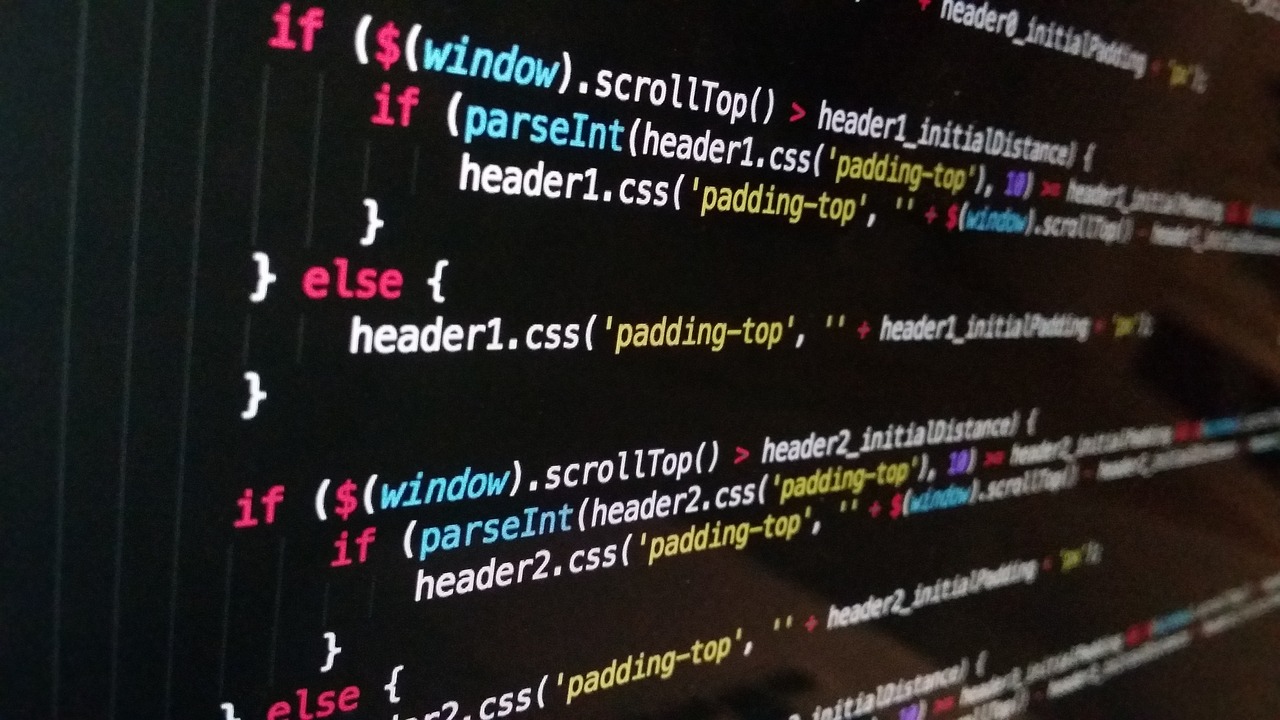The Role of Blockchain in Disaster Recovery Solutions
In an age where technology is rapidly evolving, the need for effective disaster recovery solutions has never been more crucial. Natural disasters, cyber-attacks, and other crises can disrupt organizations and communities, leaving them vulnerable and in chaos. Enter blockchain technology—a game changer that has the potential to revolutionize how we approach disaster recovery. By leveraging the unique features of blockchain, such as its decentralization, transparency, and security, we can enhance recovery efforts significantly. This article dives deep into the multifaceted role of blockchain in disaster recovery, exploring its applications, benefits, and real-world case studies that highlight its effectiveness.
Imagine a world where every piece of data related to disaster recovery is securely stored and easily accessible, regardless of the situation at hand. With blockchain, this vision becomes a reality. The technology creates an unchangeable record of transactions that can be accessed by multiple parties, ensuring that everyone involved has the most up-to-date information. This is especially important in crisis management, where every second counts, and accurate data can mean the difference between life and death. As we explore the intricacies of blockchain in disaster recovery, we will uncover how this innovative technology can not only protect data but also foster collaboration among various stakeholders, leading to more effective and efficient recovery efforts.
As we move further into the 21st century, the integration of blockchain into disaster recovery solutions is not just a possibility; it is becoming a necessity. The challenges posed by modern crises require innovative solutions that can adapt and respond quickly. Blockchain stands at the forefront of this transformation, offering a robust framework that enhances data integrity and security while promoting real-time collaboration. In the following sections, we will delve into the fundamental principles of blockchain technology, its numerous benefits in disaster recovery, and compelling case studies that showcase its practical applications.
Blockchain is a decentralized digital ledger that records transactions across multiple computers. This means that no single entity has control over the entire database, making it incredibly resilient to tampering and fraud. The fundamental principles of blockchain include immutability, transparency, and security. These features make blockchain a valuable asset in disaster recovery efforts.
At its core, blockchain operates on a system of blocks that are linked together in a chain. Each block contains a list of transactions, and once a block is filled, it is added to the chain in a linear, chronological order. This structure ensures that all transactions are permanently recorded and cannot be altered or deleted. The transparency of blockchain allows all participants in the network to view the same data, fostering trust and accountability. Security is enhanced through cryptographic techniques that protect the data from unauthorized access and manipulation.
Implementing blockchain in disaster recovery offers numerous advantages that can significantly improve crisis management efforts. Here are some key benefits:
- Improved Data Security: Blockchain's cryptographic nature ensures that sensitive data is protected against breaches.
- Real-time Access to Information: Stakeholders can access the latest data, enabling quick decision-making.
- Enhanced Collaboration: Multiple parties can work together seamlessly, sharing information and resources effectively.
In the following sections, we will delve deeper into these benefits, highlighting how they can transform disaster recovery strategies.
Q1: How does blockchain ensure data integrity during disasters?
Blockchain maintains data integrity through its immutable records. Once data is entered into the blockchain, it cannot be altered, ensuring that all information remains accurate and trustworthy throughout the disaster recovery process.
Q2: Can blockchain be used for both natural disasters and cyber-attacks?
Yes, blockchain can be applied to various types of crises, including natural disasters and cyber-attacks. Its features are adaptable and can be tailored to meet the specific needs of different recovery scenarios.
Q3: What are the challenges of implementing blockchain in disaster recovery?
While blockchain offers numerous benefits, challenges such as the need for technological infrastructure, stakeholder buy-in, and regulatory compliance can hinder its implementation in disaster recovery efforts.

Understanding Blockchain Technology
Blockchain technology is often described as a decentralized digital ledger that records transactions across multiple computers. But what does that really mean? Imagine a notebook that everyone can see and write in, but once something is written, it can't be erased or changed. This is the essence of blockchain. It operates on three fundamental principles: immutability, transparency, and security. These principles make blockchain an invaluable asset, especially in the context of disaster recovery.
To break it down further, let's explore these principles:
- Immutability: Once a transaction is recorded in the blockchain, it becomes a permanent part of the ledger. This means that any data related to disaster recovery efforts—such as resource allocation or recovery timelines—cannot be tampered with. This feature is crucial for maintaining accurate records and ensuring accountability among recovery teams.
- Transparency: All participants in the blockchain network have access to the same information. This transparency fosters trust among stakeholders, as everyone can verify the data independently. In a disaster recovery scenario, this means that agencies can work together seamlessly, sharing vital information without the fear of misinformation.
- Security: Blockchain employs advanced cryptographic techniques to secure data. Each transaction is linked to the previous one, creating a chain of blocks that is incredibly difficult to alter. This security is paramount during disasters, where sensitive data must be protected from malicious attacks or accidental loss.
Furthermore, blockchain operates on a decentralized model, meaning that no single entity has control over the entire network. This decentralization significantly reduces the risk of a single point of failure. If one node in the network goes down, the data remains accessible through other nodes. In disaster recovery, where every second counts, this feature ensures that critical information is always available, regardless of the circumstances.
In summary, understanding blockchain technology is essential for grasping its potential in enhancing disaster recovery efforts. By leveraging its immutability, transparency, and security, organizations can ensure that their recovery processes are not only efficient but also trustworthy. As we delve deeper into the benefits of blockchain in disaster recovery, keep these fundamental principles in mind, as they form the backbone of this transformative technology.

Benefits of Blockchain in Disaster Recovery
Implementing blockchain technology in disaster recovery is not just a trend; it’s a game-changer that brings a myriad of benefits that can significantly enhance crisis management efforts. Imagine a world where data integrity is guaranteed, collaboration among stakeholders is seamless, and access to crucial information is instantaneous. This is the power of blockchain. By leveraging its unique features, organizations can respond more effectively during disasters, ensuring that every piece of information is accurate, secure, and readily available.
One of the standout advantages of blockchain is its ability to ensure data security. In the chaotic aftermath of a disaster, the last thing you want is misinformation or tampered data. Blockchain’s decentralized nature means that data is not stored in a single location, making it incredibly difficult for malicious actors to alter or delete critical information. This decentralized approach not only enhances security but also provides a robust backup system. If one node fails, the data remains safe and accessible from other nodes, ensuring that recovery teams have the information they need at their fingertips.
Moreover, blockchain promotes real-time access to information. During a disaster, time is of the essence. Stakeholders—from government agencies to non-profits—need immediate access to accurate data to make informed decisions. With blockchain, everyone involved in the recovery effort can access the same information simultaneously. This shared access fosters a collaborative environment where communication flows freely, leading to better coordination of resources and efforts. Think of it as a digital roundtable where all parties can see the same map and plot their next moves together.
Furthermore, the transparency offered by blockchain cannot be overstated. In a disaster scenario, transparency is critical for building trust among stakeholders and the affected communities. With blockchain, every transaction is recorded in a public ledger that is visible to all authorized users. This means that all actions taken during the recovery process can be tracked and audited, ensuring accountability. For instance, when humanitarian aid is distributed, blockchain can provide real-time updates on where the aid is going and how it is being utilized, which is vital for maintaining trust and ensuring that resources reach those who need them most.
In summary, the benefits of blockchain in disaster recovery are profound and multifaceted. By enhancing data integrity, ensuring real-time access, and promoting transparency, blockchain technology stands out as an invaluable tool in the arsenal of disaster recovery solutions. As we continue to face natural disasters and crises, embracing this technology could mean the difference between chaos and effective recovery.

Data Integrity and Security
When it comes to disaster recovery, data integrity and security are paramount. Imagine a scenario where critical data is lost or tampered with during a crisis; the consequences can be catastrophic. This is where blockchain technology steps in as a game changer. By its very design, blockchain ensures that once data is recorded, it becomes nearly impossible to alter or delete. This immutable nature of blockchain is crucial for maintaining accurate records, which are essential for accountability among recovery teams.
Moreover, data integrity is not just about keeping records safe; it’s about building trust. When organizations rely on a blockchain system, they can rest assured that the information they are accessing is accurate and has not been compromised. This level of transparency fosters confidence among stakeholders, which is vital during recovery efforts. For instance, if an organization needs to track the distribution of supplies post-disaster, blockchain provides a clear, tamper-proof record of every transaction, ensuring that nothing goes missing.
In addition to immutability, blockchain offers decentralized storage, which significantly reduces the risk of data loss during disasters. Traditional centralized systems are vulnerable; if the main server fails, all data could be lost. In contrast, blockchain distributes data across a network of computers, or nodes. This means that even if some nodes fail due to a disaster, the data remains accessible from other nodes. The result? A resilient system that ensures continuity and reliability in crisis management.
To illustrate the importance of data integrity and security in disaster recovery, let's consider a few key points:
- Prevention of Data Tampering: Blockchain’s cryptographic features make it nearly impossible for unauthorized users to alter data.
- Audit Trails: Every transaction on a blockchain is recorded with a timestamp, creating a comprehensive audit trail for accountability.
- Enhanced Trust: Stakeholders can rely on a shared ledger that is transparent and secure, improving collaboration during recovery efforts.
In conclusion, the integration of blockchain technology in disaster recovery not only enhances data integrity but also fortifies security measures. By ensuring that data remains intact and accessible, blockchain provides a robust framework that organizations can rely on during times of crisis. As we continue to explore the potential of blockchain, it becomes increasingly clear that it is not just a technological innovation but a vital tool for enhancing disaster recovery strategies.

Immutable Records
The concept of is one of the cornerstone features of blockchain technology that makes it particularly valuable in the context of disaster recovery. When we talk about immutability, we refer to the ability of blockchain to ensure that once data is recorded, it cannot be altered or deleted. This characteristic is not just a technical detail; it holds profound implications for accountability and trust during crisis management. Imagine you are in the midst of a disaster recovery operation, where every piece of information—be it resource allocations, volunteer contributions, or logistical plans—must be accurate and trustworthy. If any of this data were to be tampered with, it could lead to catastrophic consequences, including misallocation of resources or delayed responses.
Blockchain's design inherently protects against such risks. Each transaction or record is stored in a block, which is then linked to the previous block, forming a chain of records. This structure means that altering any single block would require changes to all subsequent blocks, an almost impossible feat without the consensus of the majority of the network. This is akin to trying to change a single page in a book that is locked in a glass case; any attempt to alter it would be immediately evident. In disaster recovery scenarios, this transparency is crucial not only for operational efficiency but also for maintaining the trust of all stakeholders involved.
Moreover, the immutability of records provides a clear audit trail. Every action taken during a disaster recovery effort can be traced back to its origin, ensuring that all participants are held accountable for their roles. This is particularly important in situations where multiple organizations are collaborating, such as governmental agencies, non-profits, and private sector partners. By having a reliable record of decisions and actions, organizations can learn from past experiences and improve future responses. In essence, immutable records serve as a critical resource for both real-time decision-making and long-term strategic planning.
To illustrate the significance of immutable records in disaster recovery, consider the following table:
| Feature | Benefit |
|---|---|
| Data Integrity | Ensures accurate information is available for decision-making. |
| Accountability | Facilitates trust among stakeholders by maintaining a clear audit trail. |
| Transparency | Allows all parties to verify actions and data, reducing the risk of fraud. |
In conclusion, the immutability of records in blockchain technology is not just a technical advantage; it is a vital component that enhances the overall effectiveness of disaster recovery efforts. By ensuring that data remains unchanged and trustworthy, blockchain empowers organizations to respond more effectively to crises, ultimately saving lives and resources.

Decentralized Storage
Decentralized storage is a game-changer when it comes to disaster recovery, and it’s all thanks to the innovative nature of blockchain technology. Imagine a scenario where a natural disaster strikes, and all your crucial data is stored in a single location. What happens if that location is compromised? This is where decentralized storage shines. Instead of relying on one central server, blockchain distributes data across a network of nodes, making it incredibly resilient. Each node holds a copy of the data, so even if some nodes go offline or are damaged, the information remains intact and accessible.
This distribution of data not only enhances security but also ensures that recovery teams can access vital information from anywhere, at any time. Think of it as a safety net—if one part of the net gets torn, the rest still holds strong. This is particularly important during emergencies when every second counts. With decentralized storage, organizations can retrieve and utilize data quickly, which can significantly speed up recovery efforts. The ability to maintain access to critical information during a crisis can mean the difference between a successful recovery and a prolonged struggle.
Moreover, decentralized storage fosters trust among stakeholders involved in disaster recovery. Since the data is stored across multiple locations, no single entity has full control over it. This transparency reduces the risk of data manipulation and ensures that all parties can verify the integrity of the information. In a collaborative environment, where various agencies and organizations work together to respond to a disaster, having a reliable and tamper-proof data source is invaluable.
To further illustrate the advantages of decentralized storage, let’s take a look at a few key points:
- Data Redundancy: With copies stored across multiple nodes, the risk of data loss is significantly minimized.
- Increased Accessibility: Recovery teams can access vital information from various locations, facilitating quicker decision-making.
- Enhanced Security: The distributed nature of the storage makes it harder for malicious actors to compromise the data.
In conclusion, decentralized storage is not just a technical feature; it’s a fundamental shift in how we think about data management during disasters. By leveraging the power of blockchain, organizations can ensure that they are better prepared to handle crises, ultimately leading to more effective and efficient recovery efforts.

Real-time Collaboration
In the chaotic aftermath of a disaster, becomes a lifeline for recovery efforts. Imagine a scenario where multiple agencies, from local governments to international NGOs, are scrambling to provide aid and restore order. In such situations, effective communication is not just beneficial; it is essential. Blockchain technology facilitates this communication by providing a shared platform that allows all stakeholders to access the same information simultaneously. This eliminates the confusion and delays that often occur when different parties are relying on disparate systems or outdated data.
One of the standout features of blockchain is its ability to create a single source of truth. When everyone involved in disaster recovery can see the same data, it fosters trust and transparency. For instance, if a local government agency needs to coordinate with a humanitarian organization to distribute food supplies, both parties can access real-time information on what is available, where it is needed, and how to get it there. This kind of collaboration is not only efficient but also helps to ensure that resources are allocated where they are most needed, reducing waste and duplication of effort.
Furthermore, blockchain's decentralized nature means that even if one part of the network goes down, the information remains accessible. This resilience is crucial during disasters when traditional communication channels may be compromised. With blockchain, as long as one node in the network is operational, the data is safe and retrievable. This capability can be the difference between a successful recovery operation and one that falters due to lack of information.
To illustrate how real-time collaboration works in practice, let's consider a few scenarios:
- Emergency Response Teams: Firefighters, paramedics, and police can share critical data about ongoing operations, allowing them to coordinate their efforts more effectively.
- Resource Allocation: Organizations can track supplies in real-time, ensuring that food, water, and medical supplies are delivered to the most affected areas without delay.
- Public Communication: Blockchain can help disseminate accurate information to the public, reducing panic and misinformation during a crisis.
In summary, the ability of blockchain to enable among various stakeholders during disaster recovery is a game-changer. By providing a transparent and secure platform for information sharing, blockchain not only enhances communication but also improves the overall effectiveness of recovery efforts. As we continue to face natural disasters and humanitarian crises, leveraging this technology could pave the way for more resilient and responsive recovery systems.
Q: How does blockchain ensure data security during disaster recovery?
A: Blockchain uses cryptographic techniques to secure data, making it nearly impossible for unauthorized users to alter or delete information. This ensures that all records remain intact and trustworthy.
Q: Can blockchain be used in all types of disasters?
A: Yes, blockchain can be adapted to various disaster scenarios, whether they are natural disasters like hurricanes or man-made crises such as conflicts.
Q: What are the challenges of implementing blockchain in disaster recovery?
A: While blockchain offers numerous benefits, challenges include the need for technical expertise, initial setup costs, and ensuring that all stakeholders are willing to adopt the technology.

Case Studies of Blockchain in Action
When we think about the impact of technology on disaster recovery, it's hard to overlook the transformative role of blockchain. This innovative technology has already made waves in various sectors, and its applications in crisis management are nothing short of remarkable. Let's dive into some real-world examples that showcase how blockchain is enhancing disaster recovery efforts, making them more effective and resilient.
One of the most compelling case studies comes from the aftermath of the devastating Hurricane Harvey in 2017. In the wake of this natural disaster, a coalition of organizations, including the American Red Cross and various tech companies, came together to implement a blockchain-based system for managing disaster relief efforts. By utilizing blockchain, they were able to create a transparent and secure platform that tracked donations, ensuring that funds were directed to those in need without any mismanagement. This not only improved the efficiency of aid distribution but also enhanced trust among donors, as they could see exactly how their contributions were being utilized.
Another noteworthy example is the use of blockchain in humanitarian aid distribution during the Syrian refugee crisis. Organizations like World Food Programme (WFP) have leveraged blockchain technology to provide food assistance to refugees. By using a blockchain-based system, WFP was able to ensure that aid was distributed fairly and transparently, with each transaction recorded on an immutable ledger. This not only reduced the potential for fraud but also allowed for real-time tracking of aid distribution, ensuring that those in need received timely assistance.
In addition to these specific instances, blockchain's application in disaster recovery extends to data management. For example, during the COVID-19 pandemic, various health organizations explored blockchain for tracking vaccine distribution. By creating a decentralized ledger that recorded every step of the vaccine supply chain, stakeholders could verify the authenticity of vaccines and monitor their distribution in real-time. This level of transparency is crucial during health crises, where misinformation can lead to serious consequences.
Moreover, blockchain's potential for collaboration among different agencies is another significant advantage. In the case of natural disasters, multiple organizations often work together to provide relief. A blockchain-based platform can serve as a shared database where all parties can access and update information. This ensures that everyone is on the same page, reducing the risk of duplicated efforts and enhancing overall efficiency. For instance, during the 2019 Amazon rainforest fires, a blockchain initiative was launched to coordinate efforts among environmental agencies, NGOs, and local governments, ensuring that resources were allocated effectively.
To summarize, the case studies of blockchain in action reveal its immense potential in improving disaster recovery efforts. By enhancing transparency, ensuring data integrity, and facilitating real-time collaboration, blockchain not only streamlines processes but also builds trust among stakeholders. As we continue to face natural disasters and humanitarian crises, the integration of blockchain technology will undoubtedly play a crucial role in shaping the future of disaster recovery.
- What is blockchain technology?
Blockchain is a decentralized digital ledger that records transactions across multiple computers, ensuring transparency and security. - How does blockchain enhance disaster recovery?
Blockchain improves disaster recovery by ensuring data integrity, enabling real-time collaboration, and providing transparent tracking of resources. - Can blockchain prevent fraud in disaster relief?
Yes, blockchain's immutable records make it difficult to alter or forge data, thereby reducing the risk of fraud in disaster relief efforts. - What are some real-world examples of blockchain in disaster recovery?
Examples include its use in Hurricane Harvey relief efforts and the distribution of aid to Syrian refugees.

Natural Disaster Response
Natural disasters can strike with little to no warning, leaving communities in chaos and requiring swift, effective responses. In such critical times, the integration of blockchain technology into disaster response efforts has proven to be a game-changer. Imagine a scenario where every organization involved in disaster recovery—from governmental agencies to NGOs—can access the same, real-time information without the fear of data tampering or miscommunication. This is where blockchain shines, acting as a secure and transparent medium for sharing vital data.
One of the most significant advantages of using blockchain in natural disaster response is its ability to improve resource allocation. When a disaster occurs, resources such as food, water, and medical supplies are often limited. With blockchain, organizations can track supplies in real-time, ensuring that aid reaches the most affected areas quickly and efficiently. For instance, a blockchain system can record the location and quantity of supplies available, enabling agencies to coordinate their efforts and avoid duplication. This not only saves time but also maximizes the impact of the resources available.
Moreover, blockchain facilitates information sharing among various stakeholders. During a disaster, communication can often break down, leading to confusion and delays in response. However, with a decentralized ledger, all parties involved can access the same data simultaneously, ensuring everyone is on the same page. This shared access can significantly enhance the coordination of rescue operations, allowing for quicker decision-making and more effective deployment of resources. For example, if one agency discovers a new shelter location, they can instantly update the blockchain, allowing all other agencies to see this information and adjust their plans accordingly.
To illustrate the impact of blockchain on natural disaster response, consider the following table that outlines key benefits:
| Benefit | Description |
|---|---|
| Real-time Data Access | All stakeholders can view and update information instantly, improving communication and coordination. |
| Enhanced Accountability | Immutable records prevent data tampering, ensuring that all actions taken during the response are documented. |
| Efficient Resource Management | Blockchain helps track supplies and resources, ensuring they are allocated where they are needed most. |
In conclusion, the application of blockchain technology in natural disaster response not only streamlines operations but also fosters a sense of trust among organizations involved. By creating a transparent system where data is securely shared, blockchain enhances the overall efficiency of disaster recovery efforts. This technology empowers responders to act swiftly and decisively, ultimately saving lives and aiding communities in their recovery.
- How does blockchain ensure data integrity during a disaster? Blockchain's immutable nature means that once data is entered, it cannot be altered or deleted, ensuring that all records remain accurate.
- Can blockchain be used in real-time during a disaster? Yes, blockchain allows for real-time updates and access to information, enabling organizations to respond more effectively.
- What are the challenges of implementing blockchain in disaster recovery? Some challenges include the need for technical infrastructure and ensuring that all stakeholders are trained to use the technology effectively.

Humanitarian Aid Distribution
In times of crisis, the distribution of humanitarian aid becomes a lifeline for affected populations. However, traditional methods of aid distribution often face challenges such as lack of transparency, misallocation of resources, and inefficiencies that can severely hinder recovery efforts. This is where blockchain technology steps in, revolutionizing the way we approach humanitarian aid. By leveraging the unique properties of blockchain, organizations can ensure that aid reaches those who need it most, while maintaining a high level of accountability and efficiency.
One of the most significant advantages of using blockchain in humanitarian aid distribution is its ability to provide a transparent and immutable record of transactions. Each transaction is securely recorded on the blockchain, creating a permanent and tamper-proof history of how aid is allocated and distributed. This transparency not only builds trust among donors and recipients but also deters fraudulent activities that can occur in chaotic environments. Imagine a scenario where every donation, every distribution, and every recipient is tracked on an unchangeable ledger—this is the power of blockchain.
Furthermore, blockchain facilitates real-time tracking of aid supplies, allowing organizations to monitor the movement of goods from donors to recipients. For example, a disaster relief organization can use blockchain to track shipments of food, water, and medical supplies. Donors can see exactly where their contributions are going and how they are being used, which can significantly boost donor confidence and encourage further contributions. With real-time data at their fingertips, organizations can make informed decisions about resource allocation, ensuring that aid is directed to areas with the greatest need.
To illustrate the impact of blockchain on humanitarian aid distribution, let's consider a few key points:
- Enhanced Accountability: With every transaction recorded, it's easier to hold organizations accountable for their actions, ensuring that funds and resources are used appropriately.
- Efficient Resource Allocation: Real-time data allows for swift adjustments in aid distribution, ensuring that resources are deployed where they are needed most.
- Improved Coordination: Blockchain facilitates better communication between various organizations involved in relief efforts, reducing duplication of efforts and enhancing overall effectiveness.
Moreover, blockchain can also streamline the process of verifying identities and eligibility for aid. In many disaster situations, affected individuals may lack proper identification, making it difficult for aid organizations to determine who is eligible for assistance. With blockchain, organizations can create secure digital identities for individuals, ensuring that aid reaches the right people without the bureaucratic delays often associated with traditional systems.
In conclusion, the integration of blockchain technology into humanitarian aid distribution represents a significant leap forward in how we respond to crises. By providing transparency, accountability, and efficiency, blockchain not only enhances the effectiveness of aid distribution but also restores hope and dignity to those affected by disasters. As we continue to face global challenges, embracing innovative solutions like blockchain will be crucial in building a more resilient and equitable world.
Q: How does blockchain ensure the transparency of aid distribution?
A: Blockchain records every transaction on a public ledger, making it easy to track the flow of aid from donors to recipients. This transparency helps prevent fraud and misallocation of resources.
Q: Can blockchain help in verifying the identity of aid recipients?
A: Yes, blockchain can be used to create secure digital identities for individuals, allowing organizations to verify eligibility for aid without the need for physical documentation.
Q: What are the challenges of implementing blockchain in humanitarian aid?
A: While blockchain offers many benefits, challenges include the need for technological infrastructure, training for personnel, and ensuring that all stakeholders are willing to adopt the new system.
Q: Are there any successful examples of blockchain in humanitarian aid?
A: Yes, there are several case studies, such as the use of blockchain by the World Food Programme to distribute cash-based transfers to refugees, which has shown improved efficiency and accountability.
Frequently Asked Questions
- What is blockchain technology?
Blockchain technology is a decentralized digital ledger that records transactions across multiple computers. This means that no single entity has control over the entire database, ensuring transparency and security. Each block of data is linked to the previous one, creating a chain that is nearly impossible to alter.
- How does blockchain enhance disaster recovery?
Blockchain enhances disaster recovery by providing improved data integrity, real-time access to information, and better collaboration among stakeholders. Its immutable records ensure that data cannot be tampered with, which is crucial during recovery efforts.
- What are immutable records and why are they important?
Immutable records refer to the unchangeable nature of data once it is recorded on the blockchain. This is important in disaster recovery as it maintains accurate and trustworthy records of events and actions taken, which is essential for accountability and analysis post-disaster.
- How does decentralized storage work?
Decentralized storage distributes data across multiple nodes instead of storing it in a single location. This means that even if some nodes go offline due to a disaster, the data remains accessible from other nodes, significantly reducing the risk of data loss.
- Can blockchain facilitate real-time collaboration?
Absolutely! Blockchain allows multiple stakeholders to access the same information simultaneously, enhancing communication and coordination during disaster recovery efforts. This shared visibility helps teams respond more effectively to crises.
- Are there real-world examples of blockchain in disaster recovery?
Yes, there are several case studies that showcase the use of blockchain in disaster recovery. For instance, in natural disaster responses, blockchain has improved resource allocation and information sharing among agencies, leading to more efficient recovery efforts.
- How does blockchain improve humanitarian aid distribution?
Blockchain technology ensures transparency and accountability in the distribution of humanitarian aid. By tracking aid from donors to recipients on a secure ledger, it minimizes fraud and ensures that help reaches those who need it most during crises.



















